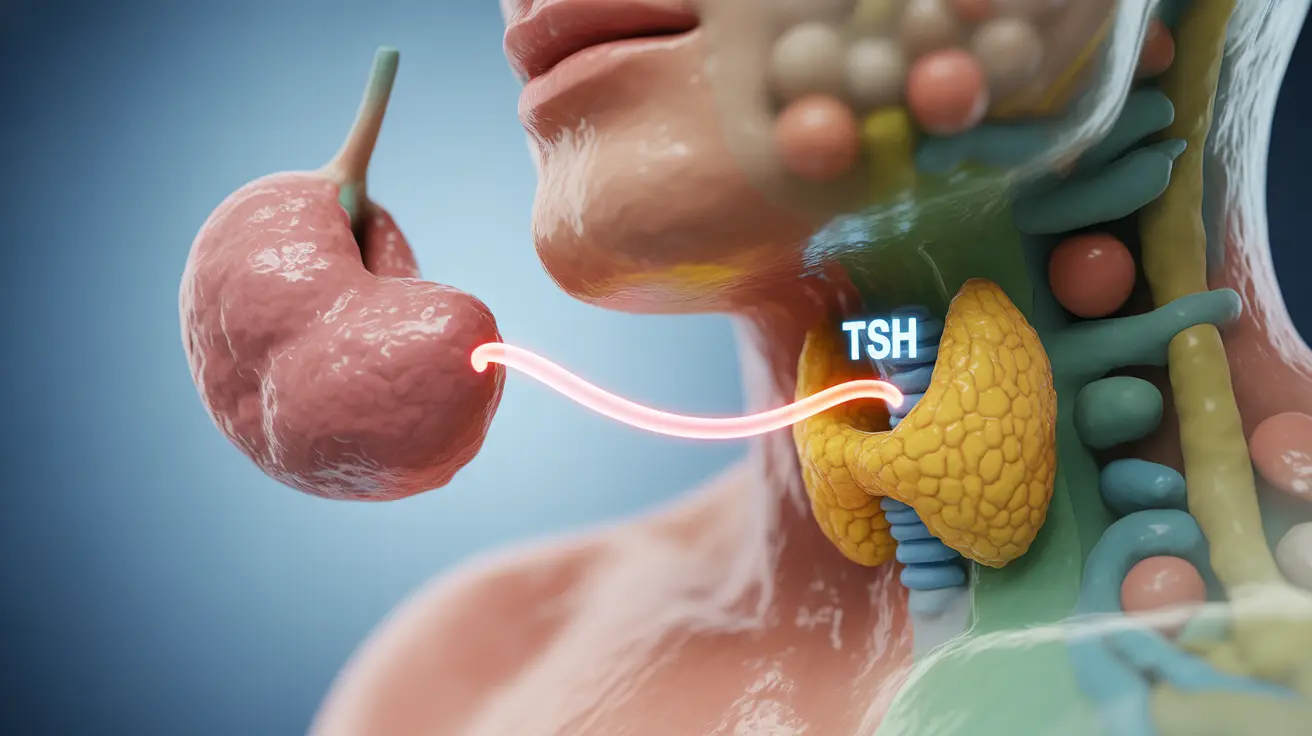Secondary hyperthyroidism is a complex endocrine disorder that occurs when the pituitary gland produces excessive amounts of thyroid-stimulating hormone (TSH), leading to increased thyroid hormone production. Unlike primary hyperthyroidism, which originates in the thyroid gland itself, secondary hyperthyroidism stems from issues in the pituitary gland, often due to tumors or other abnormalities.
Understanding this condition is crucial for proper diagnosis and treatment, as its management approach differs significantly from other thyroid disorders. Let's explore the key aspects of secondary hyperthyroidism, including its causes, symptoms, diagnosis, and treatment options.
Understanding the Difference Between Primary and Secondary Hyperthyroidism
Secondary hyperthyroidism is distinctly different from primary hyperthyroidism in both its origin and mechanism. While primary hyperthyroidism results from an overactive thyroid gland itself, secondary hyperthyroidism occurs when the pituitary gland inappropriately signals the thyroid to produce excessive hormones through elevated TSH levels.
This condition typically develops due to:
- Pituitary adenomas (benign tumors)
- TSH-secreting tumors
- Resistance to thyroid hormone
- Rarely, certain medications or medical conditions affecting pituitary function
Common Symptoms and Warning Signs
Secondary hyperthyroidism can present with various symptoms that affect multiple body systems. Common manifestations include:
Physical Symptoms
- Rapid heart rate
- Excessive sweating
- Weight loss despite increased appetite
- Tremors
- Heat sensitivity
- Muscle weakness
Neurological and Mental Symptoms
- Anxiety
- Irritability
- Sleep disturbances
- Difficulty concentrating
- Headaches
- Visual changes (if caused by a pituitary tumor)
Diagnostic Process
Diagnosing secondary hyperthyroidism requires a comprehensive approach including:
Blood Tests
- TSH levels (typically elevated)
- Free T3 and T4 levels
- Additional pituitary hormone testing
- Alpha subunit testing for suspected pituitary tumors
Imaging Studies
- MRI of the pituitary gland
- CT scan when necessary
- Thyroid ultrasound to assess gland structure
Treatment Approaches
Treatment for secondary hyperthyroidism focuses on addressing the underlying pituitary condition rather than directly treating the thyroid gland. Options include:
Medical Management
- Medications to control hormone levels
- Drugs to manage symptoms
- Regular monitoring of hormone levels
Surgical Intervention
Surgery may be necessary when:
- A pituitary tumor is present
- Medical management fails
- There are significant neurological symptoms
- The tumor is growing or causing visual problems
Post-Treatment Care
After initial treatment, patients require:
- Regular hormone level monitoring
- Ongoing medical supervision
- Possible hormone replacement therapy
- Regular imaging to monitor for tumor recurrence
Frequently Asked Questions
What causes secondary hyperthyroidism and how is it different from primary hyperthyroidism? Secondary hyperthyroidism is caused by problems in the pituitary gland, typically tumors, leading to excessive TSH production. This differs from primary hyperthyroidism, which originates in the thyroid gland itself.
What are the common symptoms of secondary hyperthyroidism caused by a pituitary tumor? Common symptoms include rapid heartbeat, anxiety, weight loss, tremors, headaches, visual disturbances, and mood changes. These symptoms can vary in severity depending on the tumor size and hormone levels.
How is secondary hyperthyroidism diagnosed through blood tests and imaging? Diagnosis involves measuring TSH, T3, and T4 levels through blood tests, combined with pituitary imaging (usually MRI) to identify any tumors or abnormalities. Additional hormone testing may be needed to assess overall pituitary function.
What treatment options are available for secondary hyperthyroidism and when is surgery necessary? Treatment options include medications to control hormone levels and surgery for pituitary tumors. Surgery becomes necessary when there are large tumors, neurological symptoms, or when medical management isn't effective.
What neurological symptoms might indicate a pituitary tumor causing secondary hyperthyroidism? Key neurological symptoms include headaches, visual field defects, double vision, and sometimes cognitive changes. These symptoms often result from the tumor pressing on surrounding brain structures.




